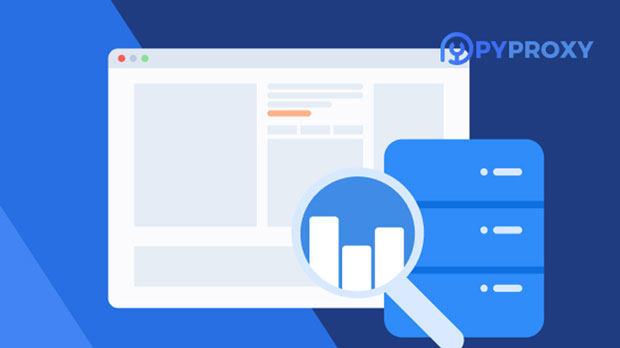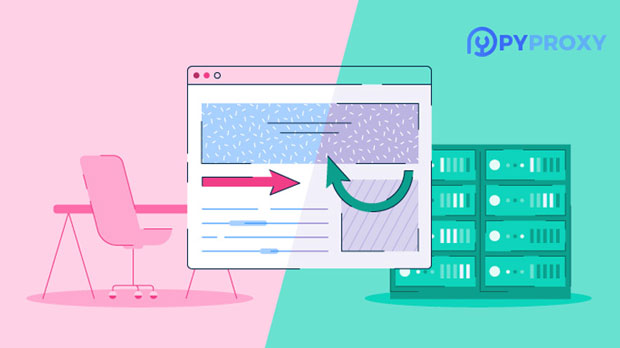What is the price difference between a high-speed SOCKS5 agent and a regular SOCKS5 proxy?
When considering the purchase of socks5 proxies, users often face the choice between high-speed SOCKS5 proxies and regular SOCKS5 proxies. While both types of proxies offer basic functionality—namely, allowing users to browse the internet anonymously and bypass geographical restrictions—there is a notable difference in their pricing. High-speed SOCKS5 proxies are typically priced higher than regular ones due to their superior performance, which is reflected in faster connection speeds, reduced latency, and enhanced stability. This article delves into the price disparity between high-speed and regular SOCKS5 proxies, providing an in-depth analysis of the factors that influence these price differences and their real-world implications for consumers. Understanding SOCKS5 Proxies: Basics and FunctionalityTo better grasp the price difference between high-speed and regular SOCKS5 proxies, it's essential first to understand the basic concept of SOCKS5 proxies.SOCKS5, or Socket Secure version 5, is an internet protocol that routes network packets between a client and a server through a proxy server. SOCKS5 proxies are commonly used for anonymous browsing, bypassing geographical restrictions, and improving security by masking a user's IP address. Unlike HTTP proxies, SOCKS5 can handle various types of internet traffic, including HTTP, FTP, and others, making it more versatile. This protocol is known for offering more stability and security compared to its predecessor, SOCKS4, and it supports a wider range of authentication methods, making it suitable for different kinds of users, including businesses and individuals.Regular SOCKS5 proxies typically come with a standard level of service, whereas high-speed SOCKS5 proxies offer superior performance in terms of speed, reliability, and stability. These variations in service level are crucial in determining the price difference between the two.Price Difference Factors Between High-Speed and Regular SOCKS5 ProxiesSeveral key factors contribute to the price disparity between high-speed SOCKS5 proxies and their regular counterparts. These factors mainly revolve around performance, infrastructure quality, and specific usage requirements.1. Network Speed and LatencyOne of the most significant differences between high-speed and regular SOCKS5 proxies lies in network speed and latency. High-speed proxies are optimized for fast data transmission, providing users with a smoother and more responsive internet experience. This is particularly important for activities like streaming, gaming, or conducting business operations that require consistent, high-speed connections.Regular SOCKS5 proxies, on the other hand, may experience higher latency and slower speeds due to less optimized infrastructure. This slower performance can be acceptable for basic tasks like anonymous browsing or accessing restricted content, but for more demanding activities, the experience may be subpar. As a result, high-speed proxies tend to come at a premium price, reflecting the additional infrastructure costs associated with maintaining high-performance servers and networks.2. Server Infrastructure and LocationThe physical infrastructure behind a proxy plays a crucial role in its performance. High-speed SOCKS5 proxies are typically hosted on high-end servers located in premium data centers with direct connections to fast internet backbones. These servers often have higher processing power, better load balancing, and access to more reliable internet routes, ensuring faster speeds and more stable connections.Additionally, the location of the servers matters. High-speed proxies often have strategically placed servers in various regions to minimize latency and ensure fast connections to users, regardless of their geographical location. Regular SOCKS5 proxies, in contrast, may have fewer servers or less strategically placed ones, resulting in slower performance, especially for users located far from the proxy's server.The investment in high-end infrastructure is reflected in the pricing. Since high-speed proxies require more powerful servers, specialized maintenance, and advanced routing capabilities, they tend to cost more.3. Bandwidth Allocation and Traffic ManagementHigh-speed SOCKS5 proxies generally offer more generous bandwidth allocation compared to regular ones. This is essential for users who need to handle large amounts of data quickly, such as for streaming high-definition videos, downloading files, or conducting high-volume business transactions. High-speed proxies ensure that users have the necessary resources to maintain a smooth and uninterrupted experience.In contrast, regular SOCKS5 proxies may impose stricter bandwidth limits, which can lead to slower speeds and throttling during periods of high usage. These proxies are typically suited for lighter tasks, where speed and bandwidth are not as critical.As high-speed proxies guarantee better traffic management and higher bandwidth availability, the cost of maintaining such infrastructure is reflected in the price. Regular proxies, with lower bandwidth allocation and more limited resources, are naturally cheaper.4. Security and Privacy FeaturesWhile both high-speed and regular SOCKS5 proxies provide a level of anonymity and privacy, high-speed proxies often come with enhanced security features. These proxies may incorporate stronger encryption methods, better protection against DDoS attacks, and more sophisticated authentication mechanisms. This ensures a higher level of data protection and security for users, especially in sensitive applications like business transactions or accessing private content.Regular SOCKS5 proxies may lack some of these advanced security features, or they may only offer basic encryption, which could be less effective in protecting user data.The additional investment in security measures for high-speed proxies contributes to the overall price difference, as the cost of implementing these extra features is passed on to the consumer.5. Scalability and ReliabilityFor businesses or individuals who require the use of multiple proxies or need to scale their usage quickly, high-speed SOCKS5 proxies often provide better scalability and reliability. These proxies can handle a large volume of simultaneous connections without significant drops in performance, making them ideal for businesses engaged in tasks like web scraping, data mining, or digital marketing campaigns.In comparison, regular SOCKS5 proxies may struggle with high volumes of traffic, leading to slower speeds, more frequent disconnections, or even downtime. The infrastructure supporting regular proxies is usually designed for lighter use, which limits its scalability.The added reliability and scalability offered by high-speed proxies often justify the higher price for those who need a dependable and scalable solution.Real-World Implications for UsersThe decision between high-speed and regular SOCKS5 proxies ultimately depends on the user's specific needs and use case. For individuals or businesses who only require basic anonymity for browsing or accessing geo-restricted content, regular SOCKS5 proxies are likely sufficient and more cost-effective. However, for those who require fast, stable, and secure connections for high-bandwidth activities like streaming, gaming, or large-scale business operations, investing in high-speed SOCKS5 proxies is a wise choice.While high-speed proxies may cost significantly more—sometimes up to three to five times the price of regular proxies—the performance benefits they offer can be well worth the investment for users who demand higher quality.ConclusionIn summary, the price difference between high-speed SOCKS5 proxies and regular SOCKS5 proxies is substantial, driven by factors such as network speed, server infrastructure, bandwidth allocation, security features, and scalability. High-speed proxies provide superior performance and reliability, making them ideal for users who need fast, secure, and stable connections for demanding tasks. Regular SOCKS5 proxies, while more affordable, may be sufficient for lighter tasks but lack the enhanced features that justify the higher cost of high-speed proxies. Ultimately, the decision comes down to the specific needs and budget of the user, as well as the value they place on performance, security, and reliability.
2025-01-08

























































